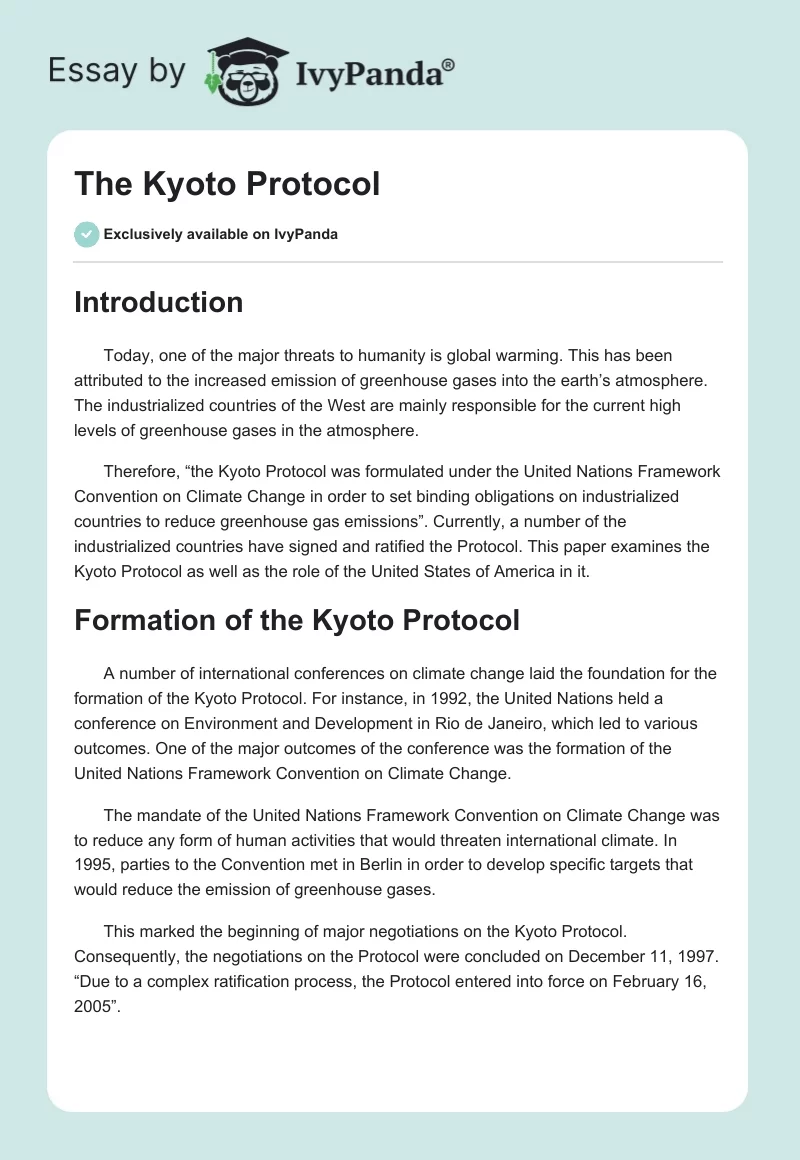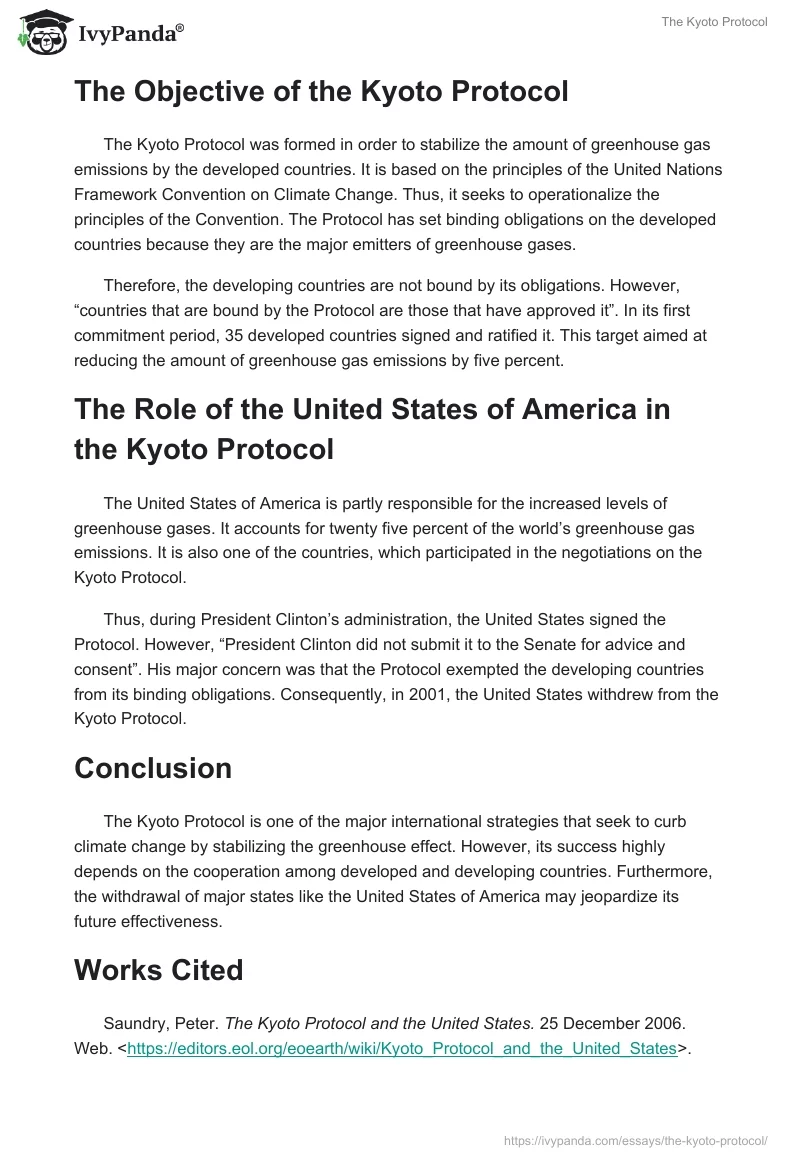Introduction
Today, one of the major threats to humanity is global warming. This has been attributed to the increased emission of greenhouse gases into the earth’s atmosphere. The industrialized countries of the West are mainly responsible for the current high levels of greenhouse gases in the atmosphere.
Therefore, “the Kyoto Protocol was formulated under the United Nations Framework Convention on Climate Change in order to set binding obligations on industrialized countries to reduce greenhouse gas emissions”. Currently, a number of the industrialized countries have signed and ratified the Protocol. This paper examines the Kyoto Protocol as well as the role of the United States of America in it.
Formation of the Kyoto Protocol
A number of international conferences on climate change laid the foundation for the formation of the Kyoto Protocol. For instance, in 1992, the United Nations held a conference on Environment and Development in Rio de Janeiro, which led to various outcomes. One of the major outcomes of the conference was the formation of the United Nations Framework Convention on Climate Change.
The mandate of the United Nations Framework Convention on Climate Change was to reduce any form of human activities that would threaten international climate. In 1995, parties to the Convention met in Berlin in order to develop specific targets that would reduce the emission of greenhouse gases.
This marked the beginning of major negotiations on the Kyoto Protocol. Consequently, the negotiations on the Protocol were concluded on December 11, 1997. “Due to a complex ratification process, the Protocol entered into force on February 16, 2005”.
The Objective of the Kyoto Protocol
The Kyoto Protocol was formed in order to stabilize the amount of greenhouse gas emissions by the developed countries. It is based on the principles of the United Nations Framework Convention on Climate Change. Thus, it seeks to operationalize the principles of the Convention. The Protocol has set binding obligations on the developed countries because they are the major emitters of greenhouse gases.
Therefore, the developing countries are not bound by its obligations. However, “countries that are bound by the Protocol are those that have approved it”. In its first commitment period, 35 developed countries signed and ratified it. This target aimed at reducing the amount of greenhouse gas emissions by five percent.
The Role of the United States of America in the Kyoto Protocol
The United States of America is partly responsible for the increased levels of greenhouse gases. It accounts for twenty five percent of the world’s greenhouse gas emissions. It is also one of the countries, which participated in the negotiations on the Kyoto Protocol.
Thus, during President Clinton’s administration, the United States signed the Protocol. However, “President Clinton did not submit it to the Senate for advice and consent”. His major concern was that the Protocol exempted the developing countries from its binding obligations. Consequently, in 2001, the United States withdrew from the Kyoto Protocol.
Conclusion
The Kyoto Protocol is one of the major international strategies that seek to curb climate change by stabilizing the greenhouse effect. However, its success highly depends on the cooperation among developed and developing countries. Furthermore, the withdrawal of major states like the United States of America may jeopardize its future effectiveness.
Works Cited
Saundry, Peter. The Kyoto Protocol and the United States. 2006. Web.
UNFCCC. An Introduction to the Kyoto Protocol. 2011. Web.


